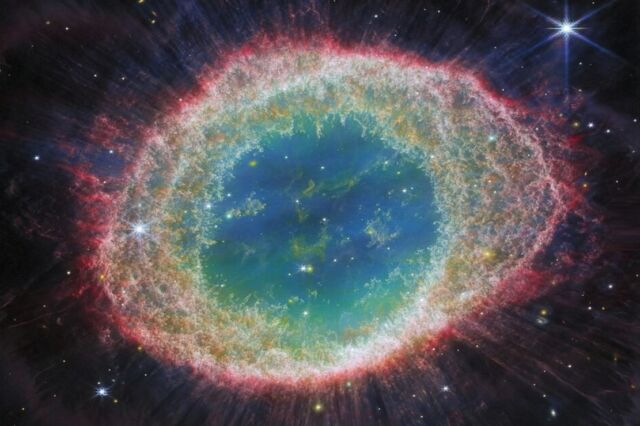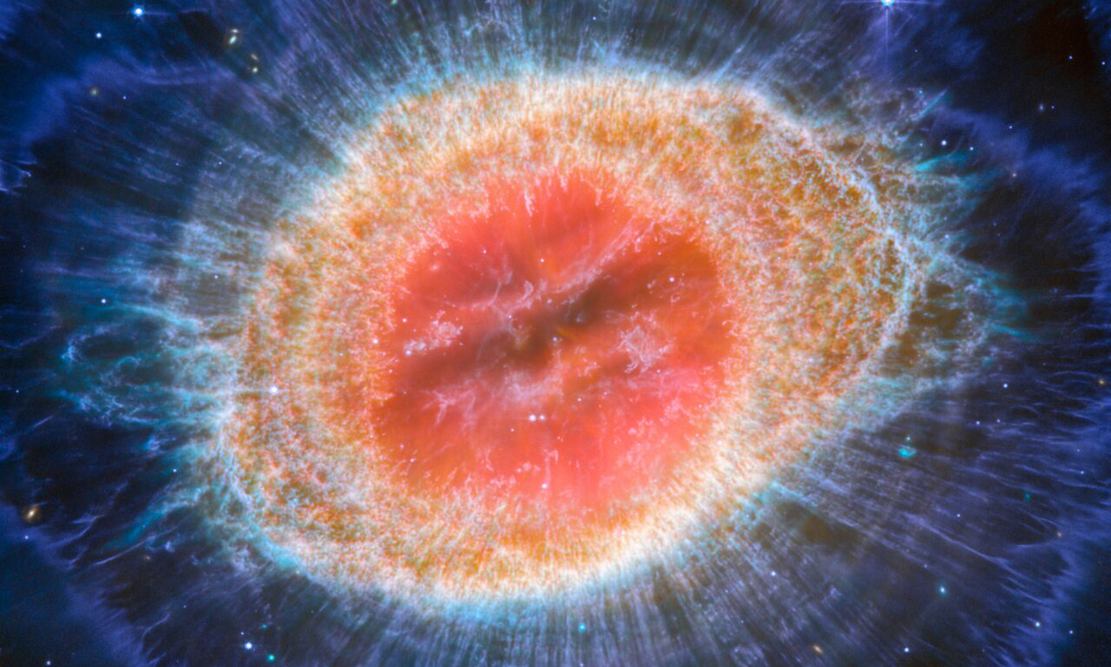Webb captures the detailed beauty of Ring Nebula, formed by a star throwing off its outer layers as it runs out of fuel,
The NASA/ESA/CSA James Webb Space Telescope has observed the well-known Ring Nebula with unprecedented detail, captured by the MIRI (Mid-InfraRed Instrument).
The Ring Nebula nebula also known as M57 and NGC 6720, is an archetypal planetary and is relatively close to Earth at roughly 2,500 light-years away.
This impressive NASA image gives a glimpse at what will happen to our home star when it dies.
But don’t worry, we’ve got at least 5 billion years left.

The new images provide unprecedented spatial resolution and spectral sensitivity, which also reveal unique details across both infrared observations. For example, the new image from NIRCam (Near-InfraRed Camera) shows the intricate details of the filament structure of the inner ring, while the new image from MIRI (Mid-InfraRed Instrument) reveals particular details in the concentric features in the outer regions of the nebulae’s ring (above).
source ESA


